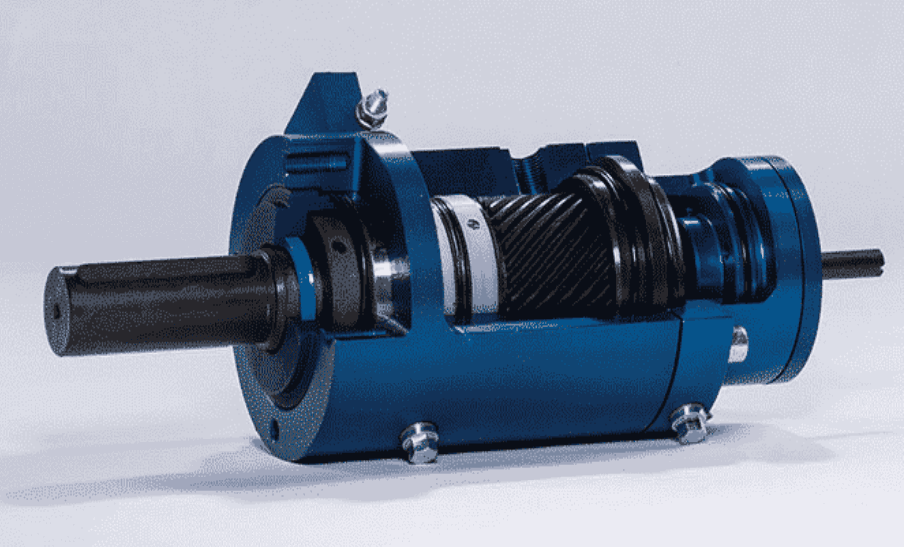In industrial applications it is critical to implement high accurate and reliable systems that control the manufacturing equipment and processes. This is where so-called actuators come into play. Actuators are distinct tools that are applied to convert energy into motion in order to automate a number of processes. In this article, we will review what actuators are, the different categories they fall into, in addition to their purposes as well as some of the important factors to consider when choosing actuators for your application. To ensure organizations find quality actuaries to add to their systems, companies like Dombor present a variety of actuators for use in industries.
What Are Actuators
An actuator is a device which converts energy, usually electrical, hydraulic, or pneumatic into motion. This motion can be in one direction or back and forth by means of linear and rotary actuators respectively. Actuators perform the tough roles of moving machinery or operating valves or imposing several functions with fine tuning in an industrial system.
In industrial automation, the actuators are used together with sensors and controllers creating intelligent systems that may self-control or rarely require control from humans. Actuators, therefore, play a great role in identifying and working on processes that enable businesses attain better, efficient, faster, and reliable performance.
Types of Actuators
Different types of actuators exist capable of fulfilling different application purposes. The main types of actuators used in industrial systems include:
Electric Actuators: These are powered to operate by electricity and are typically utilized for high accuracy movement and control. It is energy saving; they are best suited to applications where a high degree of accuracy is necessary.
Pneumatic Actuators: These actuators rely on the compressed air as a driving force to cause a movement. They are widely used in industries whereby there is demand for high speed and frequent and large and continuous repetitive motions as is evident from the packaging and assembling industries.
Hydraulic Actuators: Using the hydraulic fluid to generate pressure, they are used in applications that demand high force such as in a lifting as well as pressing task.
Thermal Actuators: These actuators work through differential temperatures and are applied most commonly in thermostatic applications.
Mechanical Actuators: These reduce the use of electrical energy and instead use manual input or mechanical energy to produce movement, thus ideal for simple systems.
All types of actuators possess their own features that make some of them more suitable for specific applications while making others less suited for particular applications. An actuator is thus chosen according to the operational requirement in the business to ensure that it suits the required application.
Applications of Actuators
Nowadays, actuators are found to be an important component of several end-use industries. Below are some of the most common use cases:
Valve Automation: Pneumatic actuators are commonly applied for driving industrial valves to open, close, or modulate the flow of a fluid or gas through a pipe line. For example, [Dombor’s actuator-driven valves](https:Their range of valves actuated( ) is purposely made to offer its clients various industries in features they require such as oil and gas, chemical processing, and water treatment among others.
Robotics: Actuators give the motion required for the arm, joint, and gripper of the robotics framework to perform assembly, welding and material handling operations.
Automotive Manufacturing: Automotive production lines require actuators for the control of the functions like bending, painting and welding.
Aerospace: They often operate aircraft systems, which include flap and landing gear operations, and many other vital parts of the aircraft.
Power Generation: In power plants, actuators facilitate the control of the loads that include turbines, valves, and other loads to ensure both efficiency and safety are achieved.
These examples shed light on how actuators are without a doubt vital components of current industrial applications.
Benefits of Actuators
There are many attributes that make use of actuators crucial in the industrial applications that it is used in. Some of the key benefits include:
Increased Automation: Autonomous devices allow the control of processes and operations that occur several times within a short period, sparing the human element from that and making the operation run efficiently.
Precision and Accuracy: Since actuators move parts and components with great accuracy, there is a lower likelihood of mistakes and variations in the operations of the equipment.
Improved Safety: Obviously, the performance of potentially hazardous tasks assists in establishing safer working conditions through the use of actuators.
Energy Efficiency: Possible advantages of modern actuators include; Optimized energy consumption in that they are constructed to use minimal energy while in operation and giving higher returns of performance.
Scalability: Equipments are easy to interface with increased flexibility that makes them ideal for application in simple to complex systems.
For these reasons, actuators are an essential factor that provides a key direction to industrial automation and smart manufacturing.
How to Choose the Right Actuator
Choosing the most suitable actuators for an industrial system is not a simple process which involves some considerations. Businesses should evaluate the following:
1. Application Requirements: Decide what type of motion is required, linear or rotary, and the force or torque expected.
2. Power Source: Select electric, pneumatic or hydraulic actuators depending on the availability of power source for the selected type and usability of the above mentioned types.
3. Operating Environment: Actuators’ material; Selection depends on aspects such as temperature, other environments, and corrosive materials.
4. Control Precision: Make sure that the actuator offers the necessary precision and reaction rate for the real-use case.
5. Load Capacity: Ensure that the actuator suffices the load or force needed for the job to be accomplished.
6. Maintenance and Durability: Choose actuators that have longevity and require low level of maintenance in an endeavor to minimize duration of inactivity and business costs in the process.
Considering all these factors, it becomes possible for the business to make a right selection of the actuators and to achieve the needed level of performance and reliability.
Motors are necessary for the automation of production processes preceding a significant interest for customers multidimensional, possessing high accuracy, reliability, and productiveness in the variety of industries. From valve automation to own robotics, it is possible to ultimately get the level of control desired by most businesses. In choosing actuators, one has to consider more of its application, such as the conditions in which it will be used and load capabilities to maximize its performance.
As for the businesses looking for the high performers and reliable actuators and valves driven by actuators, Dombor has developed a portfolio of products to fit the needs of the modern power plant. To explore their product offerings, visit Dombor’s actuator valve collection https://www.dombor.com/es/categoria-de-productos/valvulas-accionadas/
Where you select the proper actuators to include in your systems, you can be assured of improved operations, safety and definite competitive advantage in the industrial world today.







